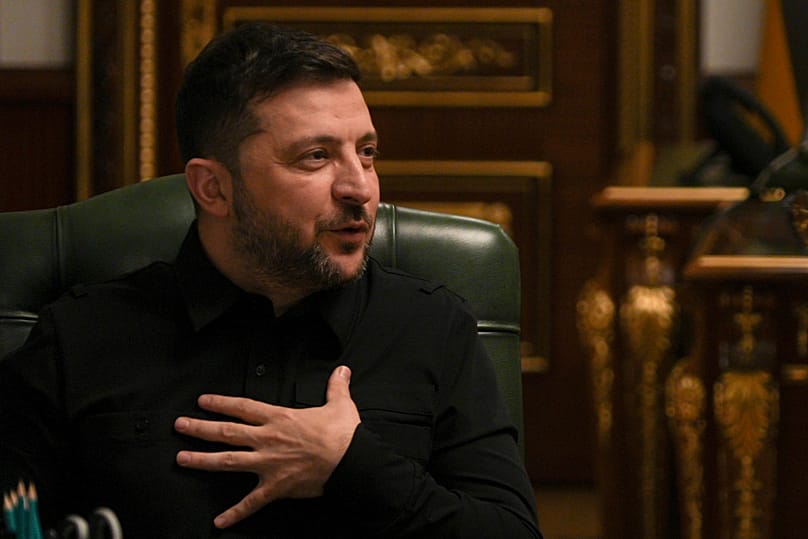Ukraine’s Energy Ministry said on Monday that Russian attacks caused more damage to its power infrastructure, resulting in scheduled blackouts in most of the country’s regions.
Ukrainian President Volodymyr Zelenskyy said on Monday that he wants to order 25 Patriot air defence systems from the US, as Kyiv continues to fend off relentless Russian aerial attacks that have brought rolling blackouts across the country on the brink of winter.
Zelenskyy acknowledged that the Patriot systems are expensive and that such a large batch could take years to manufacture.
But he said European countries could give their Patriots to Ukraine and await replacements, stressing that "we would not like to wait."
"We want to order 25 Patriot systems from the United States. For us, that's a clear budget, and we understand the financial scope; however, certain elements are missing from the agreement," Zelenskyy said in a post on X.
"European colleagues can help us here – they can lend us their systems now and then take back ours once they arrive from the manufacturers."
Zelenskyy said last week that Ukraine had received more Patriot systems from Germany.
Germany stated three months ago that it would deliver two more Patriots to Ukraine. It agreed to the move after securing assurances that the US will prioritise the delivery of new Patriots to Germany to backfill its stocks.
Germany has given more Patriot systems from its own armed forces to Ukraine than any other country, the German Defence Ministry said.
Berlin has also supplied air defence systems with different ranges, such as IRIS-T and Skynex, the statement said.
It is not known how many Patriots are in Ukraine. Overall, air defences remain stretched thin across vast expanses of Ukrainian territory, and the threat to the provision of heating and running water in the bitter winter is acute.
"We've been talking about closing the sky since day one of this war. We understand that it's our vulnerability. And we realise that Putin had a huge number of missiles, while we had very few air‑defence systems and only a small remaining stock of Soviet‑era missiles," Zelenskyy said.
"These systems were no shield at all. Nevertheless, we built the air‑defence we could, and we continue to develop it."
NATO is coordinating regular deliveries of large weapons packages to Ukraine.
European allies and Canada are buying much of the equipment from the United States. The Trump administration is not giving any arms to Ukraine, unlike the previous Biden administration.
Attacks on the energy grid
Russia's attacks on energy infrastructure have grown and have involved hundreds of drones, some equipped with cameras to improve targeting, that overwhelm Ukraine’s air defences, especially in regions with weaker protection.
Also, this year Russia's strategy has changed to strike region by region, hitting local switchyards and substations, instead of taking aim at the centralised national grid.
Ukraine's Energy Ministry said on Monday that Russian attacks had caused further damage to its power infrastructure, resulting in scheduled blackouts across most regions of the country.
It urged Ukrainians to rationalise their electricity use, especially during peak hours in the mornings and evenings.
Combined missile and drone strikes on the power grid have coincided with Ukraine's frantic efforts to hold back a Russian battlefield push aimed at capturing the eastern stronghold of Pokrovsk.
Zelenskyy said Russia has assembled 170,000 troops for a renewed push into the city.
There has been a relative lull in fighting in recent days, according to reports gathered by the Institute for the Study of War.
But the Washington-based think tank said it expected Russian forces to quicken the tempo of their attacks in coming days as they move more troops into the city.

















